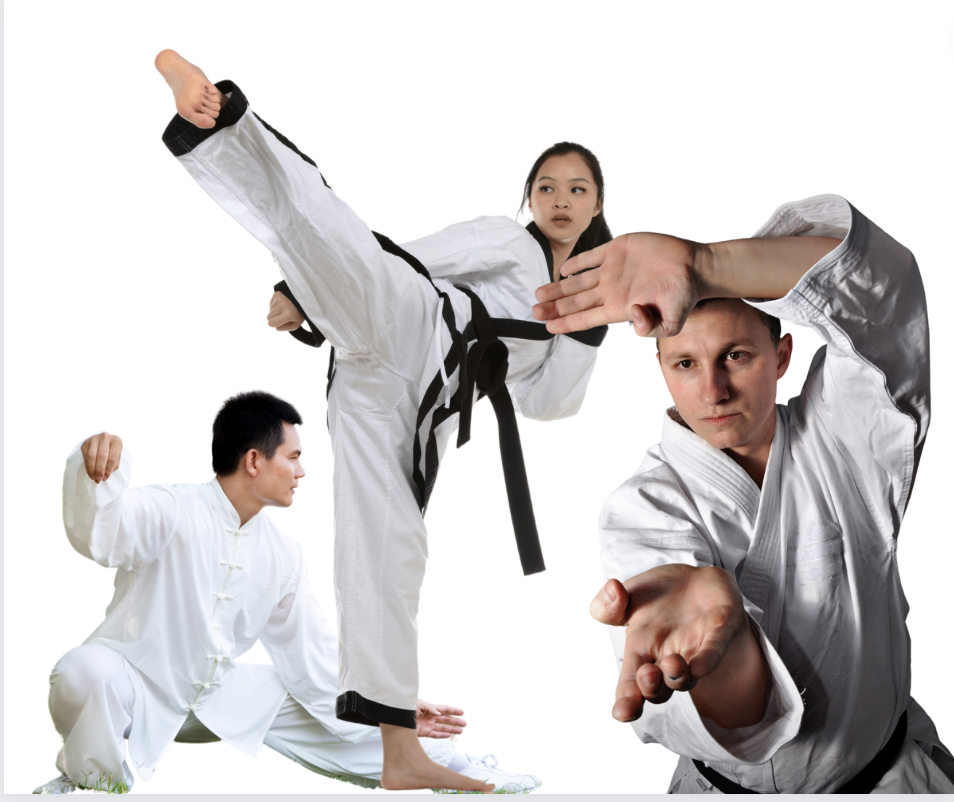by GM Jeff Helaney, IV Dan
After well over half a century practicing the martial arts, I have my own opinions about the martial arts and what is “best” but I tend to keep my views to myself because what I find important is not important to everyone. Almost everybody has heard of TaeKwon-Do, Karate, and Kung-Fu. Unfortunately the movies, social media, and video games have created a lot in inaccurate narratives surrounding each of these arts. Most of the things we hear are simply opinions and should have limited impact on your search.
Let’s break it down a bit and give the words a little bit of context. TaeKwon-Do (Taekwondo, Tae Kwon Do), Karate, and Kung-Fu are generic terms for a plethora of different arts that originated in different geographical locations. Books and even encyclopedias have been written on specific subsets of each of these words. Rather that do a deep dive we will break them down by area and characteristics.
TaeKwon-Do refers to a specific subset of styles that originated in the Korean Peninsula. Due to different Kwan affiliations, philosophy, and political interventions these arts have divided in two different directions with hundreds of minor variations in each. Traditional stylists tend to focus on practical applications with competition being an afterthought while more modern stylists tend to focus on the reverse with techniques often being taught for their visual appeal. It is impossible to think of any style of TaeKwon-Do without visualizing high and flashy kicks. As a whole, these arts are considered to be hard external styles meaning that they focus on physical development and strong techniques to achieve mastery.
Karate is a general term used to describe arts that developed in and around Japan and Okinawa. These styles are ‘generally’ very rigid and linear with lower kicks being the norm. Many of the styles that fall under this banner have been described as quick, strong, and to the point. Very little extraneous effort put in to teaching or learning techniques that have limited use. Like TaeKwon-Do, it is considered a hard external style although many subsets focus on both philosophical and spiritual growth.
The term Kung-fu was popularized in the 1970’s by television and movies to represent styles tied to the geographical region of China (and the Philippines, Indonesia). Kung-fu actually translates in to the concept of time spent and excellence. More accurately these styles could be described by the term WuShu. The majority of these arts are characterized by flowing circular movements that re-direct force. Most kicks are low and emphasis is largely focused on intricate re-directive hand movements. Most Kung-fu styles are considered soft internal styles that create physical excellence through spiritual and philosophical development allowing for intense commitment to the techniques performed.
Now that we have given broad context to basic terms, let’s try to look at options. Before you decide to train in a particular style write out your specific goals. What is important to you? Once you have your goals defined it is time to begin doing research on the schools in your area. Although price may be a factor for you, it should not be your primary focus. Take the time to research well reviewed schools in your area and make appointments to visit them. Research the credentials of the main instructors and go in armed with questions about the school, the instructor’s history, and his or her teaching views. If the answers seem to fit with your own wants and needs, then explore it further with a trial. If you feel comfortable then take the leap and commit to training for at least six months to a year. This time will give you the chance to explore the art and decide it is right for you.
Are you interested in learning more? Contact Omaha Blue Waves Martial Arts at (402) 215-6003.

